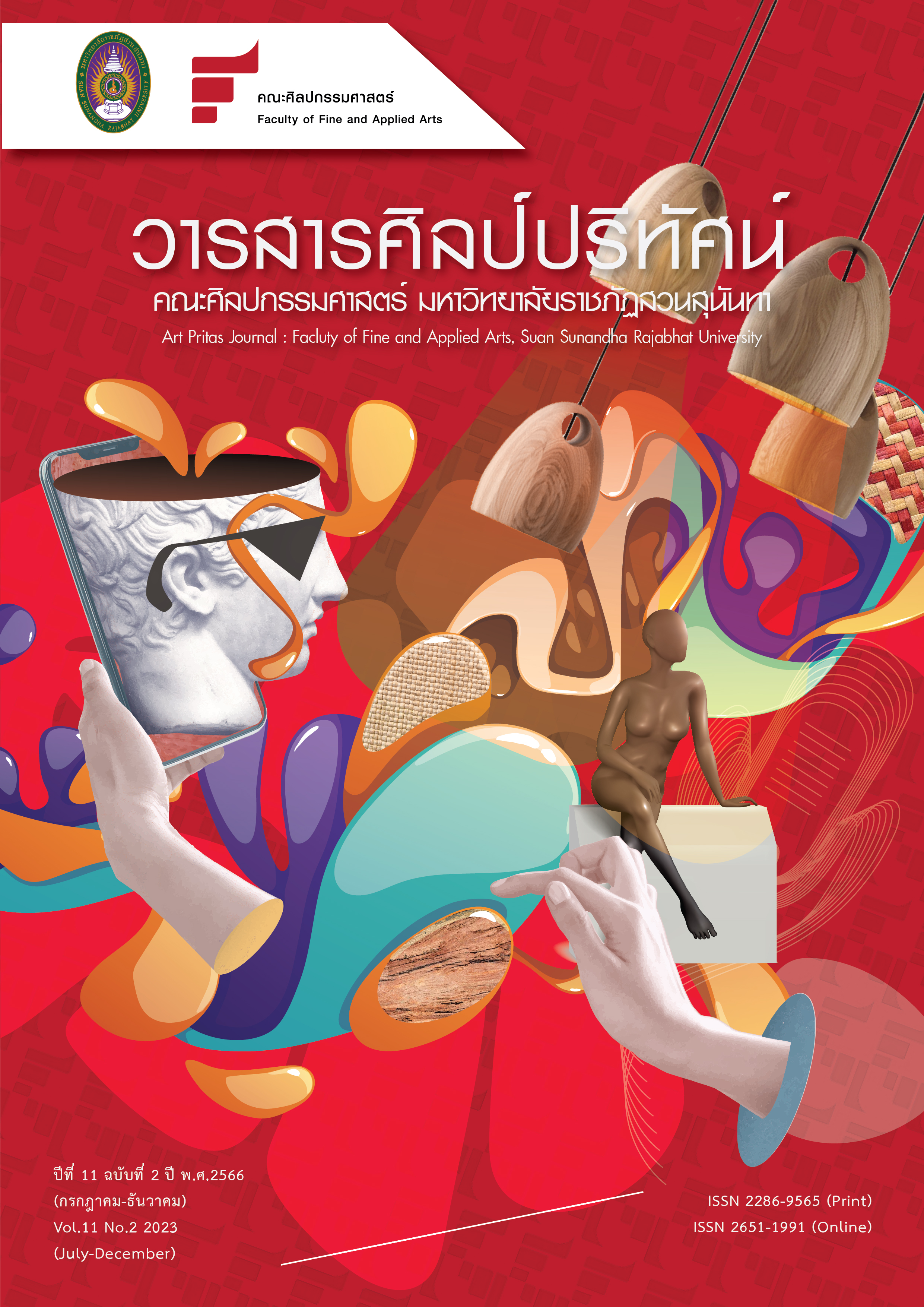ANALYSIS OF THE COMPOSITION OF TRADITIONAL VILLAGE IMAGE FROM THE PERSPECTIVE OF CULTURAL LANDSCAPE - A CASE STUDY OF VILLAGES IN HUANG HE VALLEY IN WESTERN HENAN REGION, CHINA
Main Article Content
บทคัดย่อ
Abstract
The purpose of this study is :1) To discuss the current problems affecting the traditional rural cultural landscape in Huang He valley in western Henan region; 2) To analyze the characteristics and problems of cultural landscape to prevent and develop traditional rural landscape; 3)To develop new spatial design innovation guidelines for institutions concerned with preserving and developing the image of cultural landscapes; 4) To evaluate the spatial design of traditional villages from the perspective of cultural landscape of the Huang He valley in Western Henan region. At present, the image protection and renewal of traditional villages often remain on the surface form of "visible objects", resulting in constructive and protective damage. Reinterpreting traditional village images by introducing the theory of cultural landscape will generate new cognitive ideas. Therefore, this study adopts a qualitative research method to analyze the composition of traditional village images in Huang He valley in western Henan region from the perspective of cultural landscape. There are three stages :1) To explore the problem of traditional villages at the national and provincial levels; 2) Literature review, field literature, and data collection in various aspects; 3) Data analysis to find out the overall elements of the village and formulate guidelines to innovate the rural space design. The results show that the image composition of traditional villages in Huang He valley in western Henan region can be understood as a composite system composed of layout space image, street place image and landmark node image. The images of the three spatial carriers are independent of each other, and convey different immaterial meanings through different spatial representations. At the same time, the three spatial carriers are linked to each other when forming the overall image of the village. This kind of cognition can be used as the basic premise for the protection and renewal of traditional village images.
Article Details

อนุญาตภายใต้เงื่อนไข Creative Commons Attribution-NonCommercial-NoDerivatives 4.0 International License.
เนื้อหาและข้อมูลในบทความที่ลงตีพิมพ์ในวารสารศิลป์ปริทัศน์ ถือเป็นข้อคิดเห็นและความรับผิดชอบของผู้เขียนบทความโดยตรง ซึ่งกองบรรณาธิการวารสารไม่จำเป็นต้องเห็นด้วย หรือร่วมรับผิดชอบใดๆ
บทความ ข้อมูล เนื้อหา รูปภาพ ฯลฯ ที่ได้รับการตีพิมพ์ในวารสารศิลป์ปริทัศน์ถือเป็นลิขสิทธิ์ของวารสารศิลป์ปริทัศน์
เอกสารอ้างอิง
Kevin, L. (2001). The Image of the City. Beijing: Huaxia Press.
Liu, Y. (2021). A Study on the Protection and Renewal of Jimo Phoenix Village from the Perspective of Spatial
Image (Master’s thesis), Dalian University of Technology.
Li, J. (2007). A Study on the Images and Ideas of the School Emblem of University (Master’s thesis).Central South
University.
Moughtin, J. C. (1978). The Plansters Vision. Nottingham: The University of Nottingham Press, 5.
Wu, Y. (2015). The Deconstruction of the Space Image Elements of the Traditional Village of Hydrographic Net Region in Southern Jiangsu (Master’s thesis). Suzhou University of Science and Technology.
Xiao, J. (2014). The composition and Connotation Study Between Landscape Media and Cultural Mechanisms in
China’s Historic Settlement from the Perspective of “Cultural Landscape”:Case Studies on Historical Settlements in the Southwest Area. Architectural journal (02), 89-97.
Xiao, J. (2015). Evolution Process and Dynamic Mechanism Analysis of Historic Town Cultural Landscape in
Southwest Mountainous Area (Doctoral dissertation). Chongqing University.
Xiao, J., & Cao, k. (2012). Study on the Building Layout and Ritual Space Creation of Local Confucian Temples in
Ming and Qing Dynasties. Architectural journal (08), 119.


